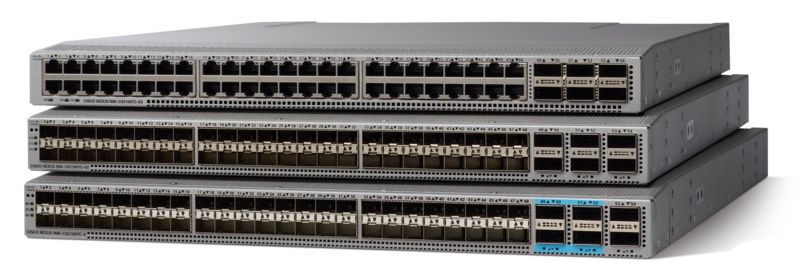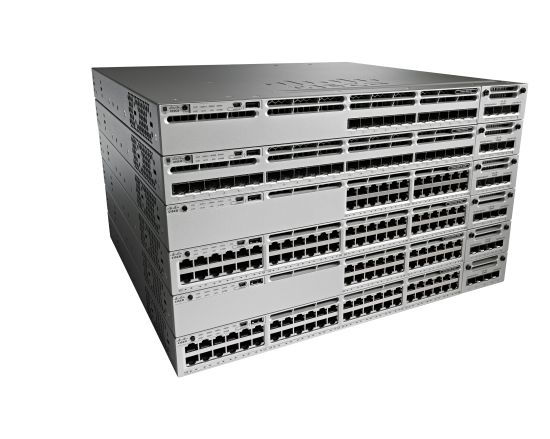A datacenter switch is a crucial component of a datacenter’s networking infrastructure, designed to connect servers, storage devices, and other networking equipment within a datacenter environment. These switches play a vital role in facilitating communication between various devices, enabling data transfer, and ensuring high-performance connectivity. Here’s an in-depth explanation of what a datacenter switch is and how it functions:
Overview:
A datacenter switch is a high-performance networking device that operates at the data link layer (Layer 2) and sometimes at the network layer (Layer 3) of the OSI model. It is specifically engineered to handle the heavy traffic demands and stringent requirements of modern datacenters, where reliability, scalability, and low-latency communication are paramount.
Functionality:
Packet Forwarding: The primary function of a datacenter switch is to forward data packets between connected devices based on their MAC (Media Access Control) addresses. Each device in the datacenter is typically connected to a switch port, and the switch uses MAC address tables to efficiently route packets to their intended destinations.
Layer 2 Switching: Datacenter switches excel at Layer 2 switching, where they intelligently forward Ethernet frames within the same network segment or VLAN (Virtual Local Area Network). This allows for efficient communication between devices within the same broadcast domain.
Layer 3 Routing (in Layer 3 Switches): Some datacenter switches also support Layer 3 routing capabilities, enabling them to route traffic between different subnets or VLANs within the datacenter. This functionality is essential for interconnecting servers and devices across multiple network segments.
High Port Density: Datacenter switches typically offer a high port density to accommodate the large number of servers and networking devices present in modern datacenter environments. They may feature dozens or even hundreds of ports, including Ethernet ports with various speeds such as 1 Gigabit, 10 Gigabit, 25 Gigabit, 40 Gigabit, and 100 Gigabit Ethernet.
Low Latency: To meet the demanding requirements of real-time applications and high-performance computing workloads, datacenter switches are engineered to minimize packet processing delays and ensure low latency communication between devices.
Redundancy and High Availability: Datacenter switches often incorporate redundancy features such as hot-swappable power supplies, modular designs, and support for link aggregation (e.g., LACP – Link Aggregation Control Protocol) to enhance network reliability and availability.
Quality of Service (QoS): Many datacenter switches support Quality of Service (QoS) mechanisms to prioritize certain types of traffic, ensuring that mission-critical applications receive the necessary bandwidth and network resources.
Advanced Features:
Virtualization Support: Datacenter switches often support network virtualization technologies such as VLANs, VXLAN (Virtual Extensible LAN), and NVGRE (Network Virtualization using Generic Routing Encapsulation) to enable flexible network segmentation and resource isolation.
Software-Defined Networking (SDN) Integration: Some modern datacenter switches are compatible with SDN architectures, allowing for centralized network management, programmability, and automation through SDN controllers and APIs.
Security Features: Datacenter switches may include security features such as Access Control Lists (ACLs), Port Security, and DHCP Snooping to mitigate security threats and enforce network policies.
Conclusion:
In summary, a datacenter switch is a critical networking device that forms the backbone of datacenter infrastructure. With its high performance, scalability, low-latency communication, and advanced features, the datacenter switch enables efficient connectivity and seamless operation of modern datacenters, supporting a wide range of applications and workloads.

1
Cisco Catalyst 3850 Series

Cisco is a major player in the networking industry, and the Catalyst 3850 series is known for its advanced features, stacking capabilities, and high performance.
2
Cisco Catalyst 9000 Series

Cisco Catalyst 9000 Series: Another popular series from Cisco, offering advanced features and capabilities suitable for various network environments.
3
Cisco Catalyst 3750X

Cisco is a major player in the networking industry, and the Catalyst 3750X series is known for its advanced features, stacking capabilities, and high performance.
4
Cisco Catalyst 2960 Series:

Cisco Catalyst 2960 Series: Cisco is a leading provider of networking equipment, and the Catalyst 2960 series is known for its stability and extensive feature set.
5
HPE Aruba CX 6000 Series

Hewlett Packard Enterprise’s CX 6100series switches provide PoE options, robust security features, and scalability suitable for medium to large-scale deployments.
6
Juniper Networks EX Series

Juniper’s EX series switches are known for their high-performance and scalability, catering to the needs of enterprise networks.
Quickspecs:
Datasheet:
7
Extreme Networks X440-G2 Switches

Known for its stacking capabilities and advanced features, the Summit X440-G2 series is designed for demanding network environments.
Product Datasheet:
8
HPE Aruba 2500 Series

Hewlett Packard Enterprise’s Aruba 2500 series switches provide PoE options, robust security features, and scalability suitable for medium to large-scale deployments.
Models and Datasheet:
Models and Datasheet:
2540 Switch Series Data Sheet | HPE Aruba Networking (arubanetworks.com)
9
Ubiquiti UniFi Professional Series

Ubiquiti’s UniFi Switches are popular for their ease of use and management, often utilized in deployments with UniFi networking gear.
Models and Datasheet:
10
Cisco Small Business 350 Series

Cisco Business is a portfolio of affordable wireless access points, switches and routers designed and built for Small Business. Managed through Cisco Business mobile app or dashboard, the portfolio provides a simple and reliable experience.
Models and Datasheet:
Cisco Business 350 Series Managed Switches Data Sheet – Cisco